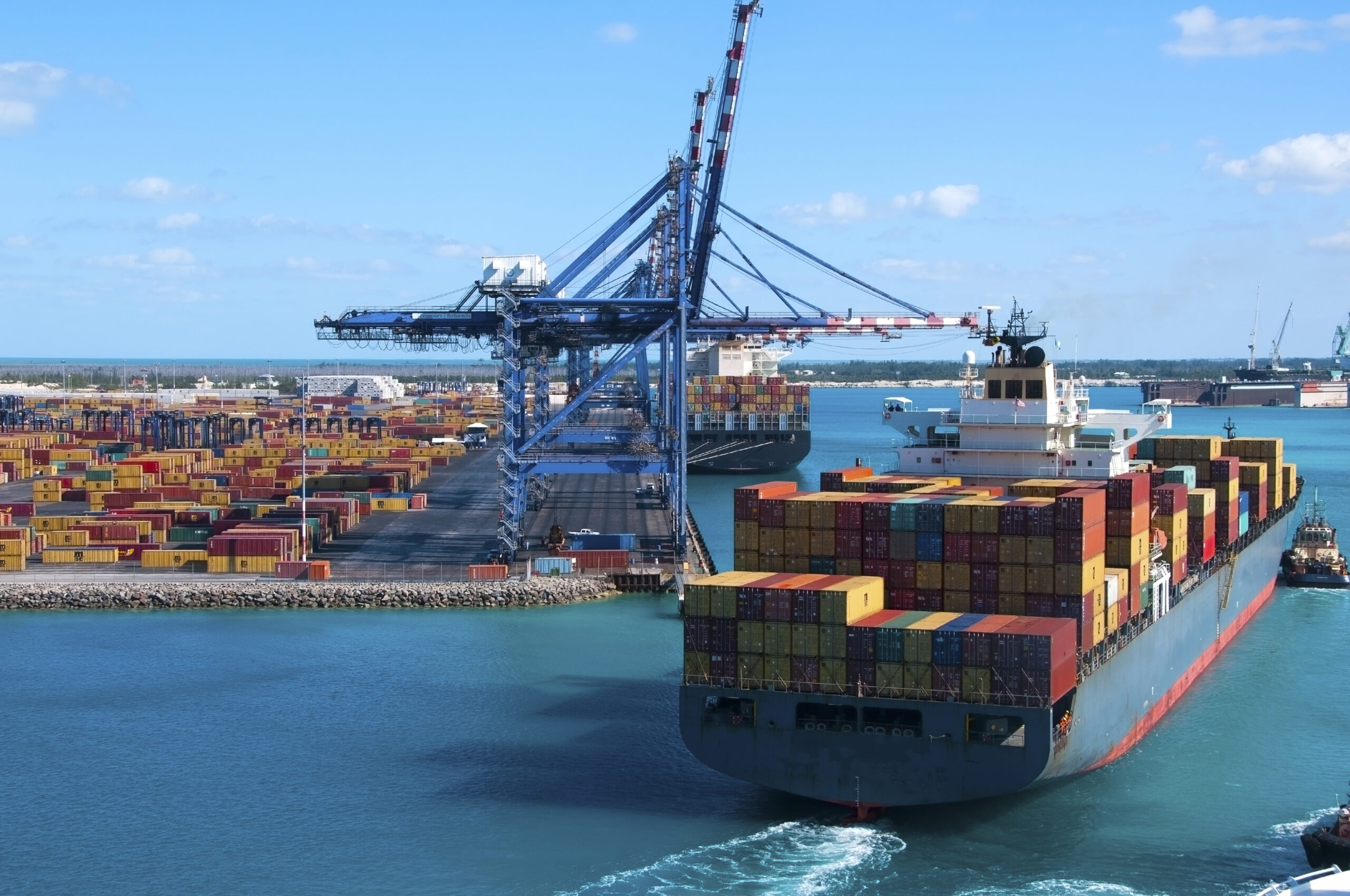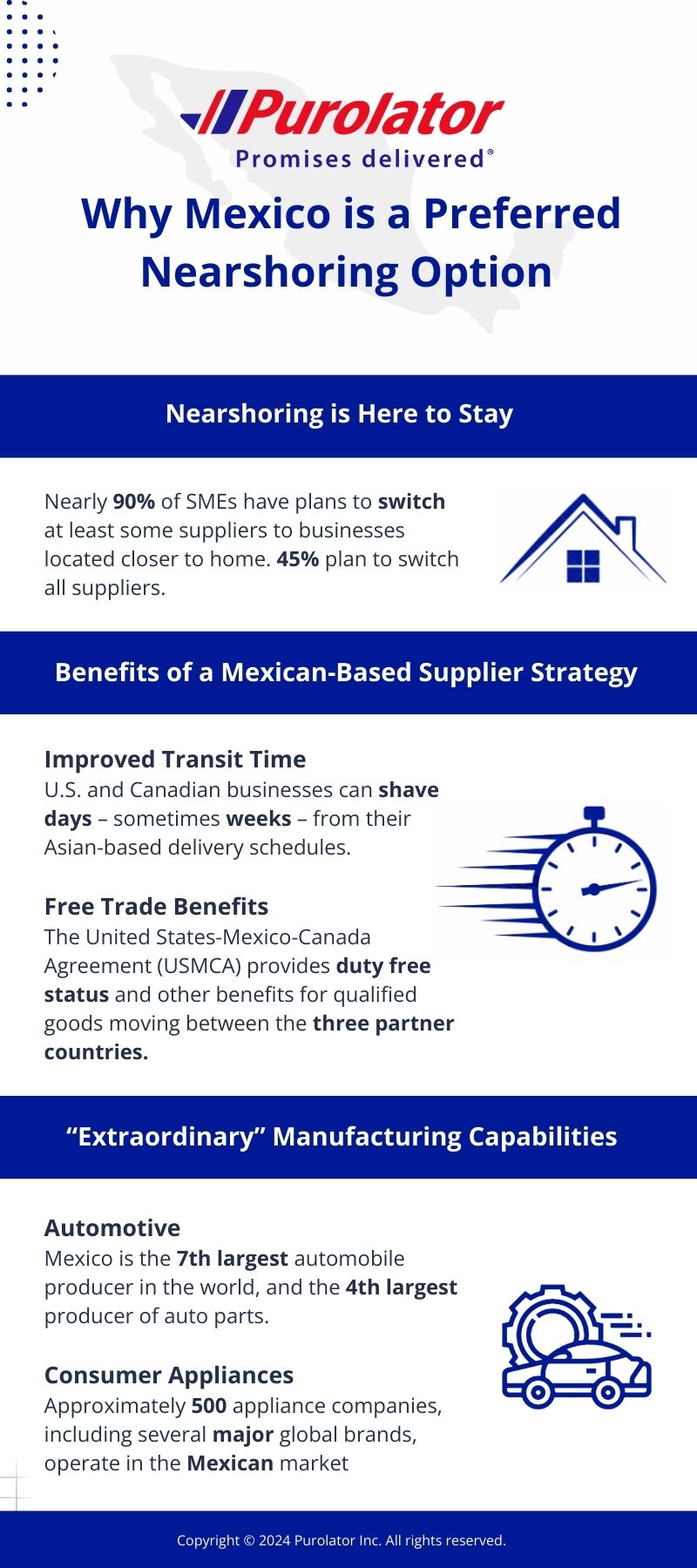U.S. and Canadian businesses increasingly agree that supply chains have become too complicated. For many, this has meant untangling their Asian-based operations and returning at least parts of production closer to home, often to Mexico.
The emergence of Mexico as a “nearshoring darling” has been a pleasant discovery for businesses that previously looked to China for supply chain cost efficiencies. Businesses had become so heavily invested in China that the country was dubbed the “factory of the world,” with China accounting for 35% of the world’s manufactured goods.
It seemed that China had an impenetrable lock on the world’s manufacturing. Until things started to change. Lots of things. Labor costs started to tick up. Geopolitical tensions heightened. The global pandemic. Tariffs. Shorter lead times.
As businesses began to rethink their China-based supply chains, Mexico gained traction as a preferred option. Businesses came to understand that Mexico could provide high-quality, low-cost manufacturing opportunities, but closer to home. The uptick in Mexico-based nearshoring has jolted the North American trade relationship. Mexico is now the United States’s largest trading partner, and Canada’s third largest, after the U.S. and China.
Today, it’s increasingly likely for goods entering the U.S. and Canada to carry a “Made in Mexico” label, rather than the ubiquitous “Made in China” designation.
Our new infographic provides a quick overview of reasons behind Mexico’s nearshoring success.
Want More Information?
Want to learn more about Mexican nearshoring opportunities?
Here’s a little more information, that builds on the data presented in our infographic.
-
Direct Access to U.S. and Canadian Markets
-
- Asian-based supply chains must cross an ocean which, on average means transit times of 35-45 days. Compare that with a Mexico-based strategy in which shipments travel by truck and can arrive in a matter of days.
-
- With most manufacturing facilities located in northern Mexico, shipments are just a short drive from the U.S. border.
-
- Once in the U.S., Canada-bound shipments can be seamlessly processed for direct, uninterrupted northbound service.
-
- Faster shipping times allow businesses to meet just-in-time delivery requirements and meet customer expectations.
-
Workforce Accessibility/Labor Costs
-
- The average manufacturing wage in Mexico is US$2.80 per hour. By comparison, the average U.S. manufacturing employee earns about $25 per hour, with Chinese workers earning $5.58 per hour.
-
- Mexico boasts a highly skilled workforce trained for today’s technology-based manufacturing environment. Mexican universities have emphasized STEM education, and now graduate more technicians and engineers than U.S. academic institutions.
-
Established Manufacturing Networks
-
- Mexico is home to established manufacturing clusters in which industry-specific manufacturers and suppliers are located within a geographic area and leverage access to workers, infrastructure, and natural resources. Industries supported by manufacturing clusters include:
-
-
- Aerospace
-
-
-
- Advanced Manufacturing
-
-
-
- Automotive
-
-
-
- Consumer Electronics
-
-
-
- ICT and Digital
-
-
-
- Home Appliances
-
-
-
- Medical Devices.
-
-
Duty-Free Shipping
-
- The United States-Mexico-Canada Agreement (USMCA) offers duty-free status to qualified goods along with intellectual property and digital trade protections, customs clearance efficiencies, and industry-specific benefits. This allows significant opportunities for businesses to reduce costs and improve efficiency.
-
- The U.S., Canada, and Mexico are committed to promoting cross-border trade. The benefits of this stable environment are especially apparent as the U.S./China trade war continues to escalate.
Learn more about Mexican Nearshoring
More and more businesses are choosing to move supply chain operations to Mexico. Our new infographic highlights the factors driving these important decisions. But we also have a white paper that offers even more detailed information.
Our White Paper will Make You an Expert! Mexican Manufacturing Opportunities and Logistics Efficiency for Canada-Bound Shipments The whitepaper delves into each of these topics and others in greater detail.

